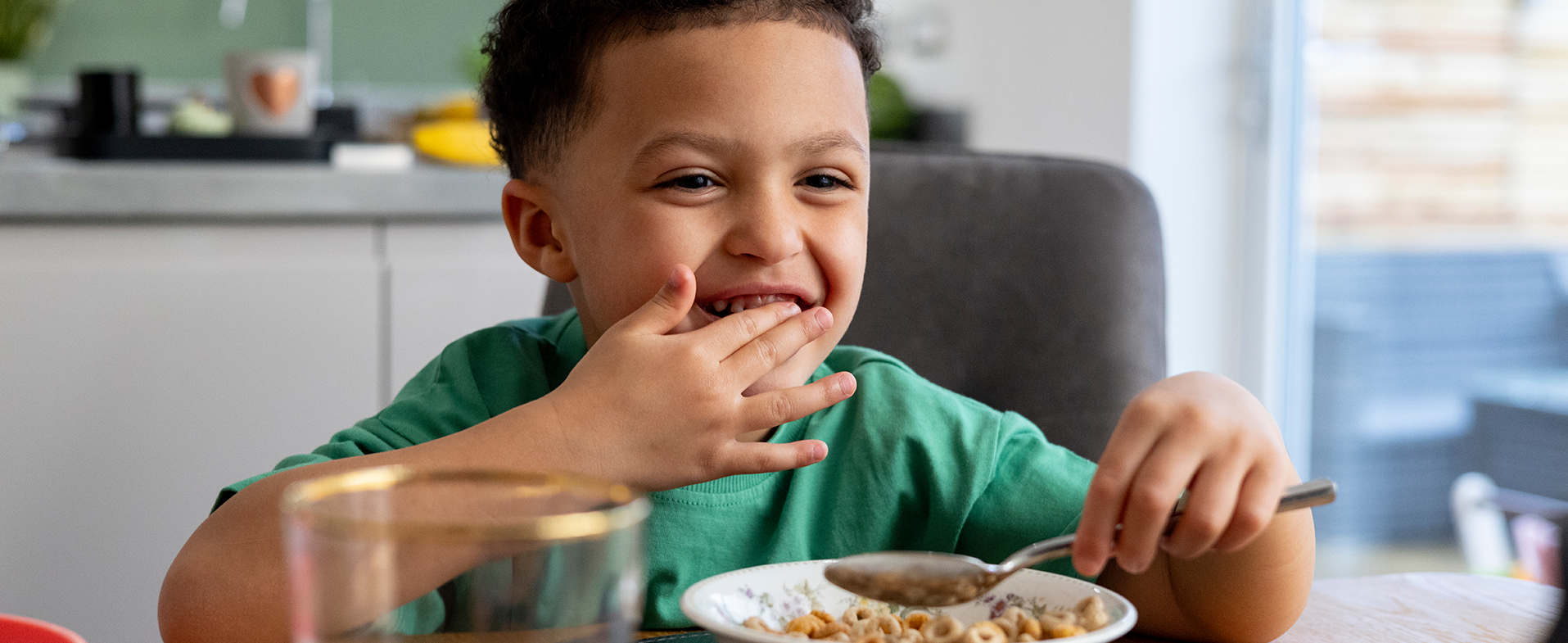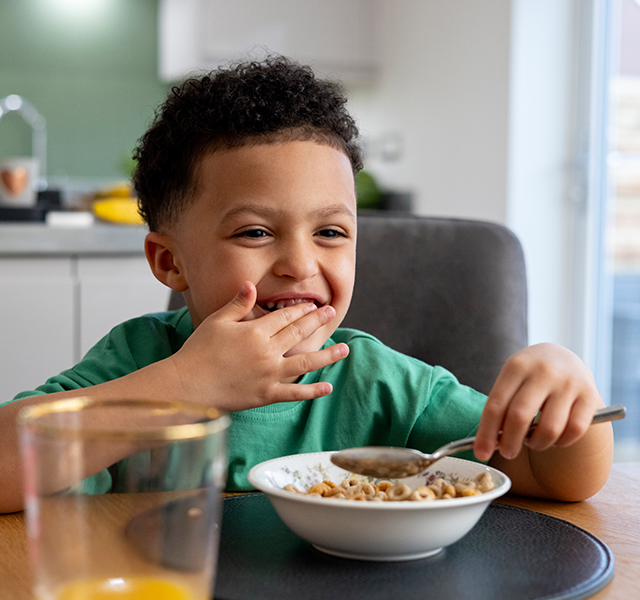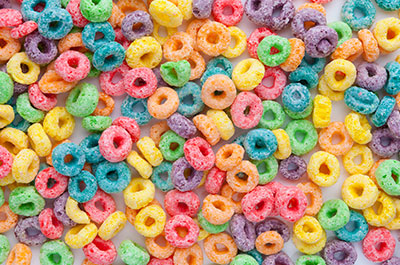As any parent knows, busy mornings and breakfast can be a tricky combination. You’re trying to get everyone fed and off to school and work—while navigating lost shoes, missing homework and at least one meltdown.
This is why so many parents (and kids) reach for a bowl of cereal each morning. It’s fast, it’s easy and (according to the label), it’s also healthy. Or is it?
“A lot of times manufacturers use marketing lingo on the box that can make the cereal sound super-healthy,” says Allegra Picano, MS, RD, a nutritionist at Henry Ford Health. “And combined with the bright colors and characters that appeal to kids, it’s a marketing ploy that often gets you to buy that cereal.”
With some smart strategies, you can still get your kids a healthy breakfast (and maybe even make it to school on time).
What to Look for in a Kid’s Breakfast Cereal
The first step is to look beyond the hype. Don’t be fooled by label promises. Instead, turn the box around and take a close look at the ingredients and the nutrition panel information.
“Cereal can be a healthy way to start the day,” says Picano. “But make sure the cereal you choose is a good source of protein, fiber and whole grains and is low in added sugar.”
Ideally, that means that each serving provides at least 2 grams of fiber and protein, and no more than 5 grams of added sugar. Overall, your child’s daily diet should contain no more than 25 grams of added sugar (about 6 teaspoons). For children under age 2, the recommendation is zero grams of added sugar. Children who eat too much added sugar in their diets are at a higher risk of obesity, diabetes and other health problems.
The key, however, is paying attention to what the box says is a serving size. “It’s not always representative of what you eat,” warns Picano. “If the serving size is ¼ cup and you fill a bowl with twice that much, remember you’re also getting twice as much added sugar.”

Subscribe To Our E-Newsletter
How to Make Cereal More Fun (and Healthier)
Lower sugar options may be a tough sell for your kids. But there are some ways to liven them up without overdoing the added sugar.
If you start with a very low or even no-sugar-added cereal (like plain Cheerios), you could let your kids sprinkle on their own bit of sweetness. Even if they add a whole teaspoon of sugar, that’s 4 grams of sugar. A teaspoon of honey adds 6 grams. Meanwhile, a serving of many popular kid’s cereals contains 12 grams or more of added sugar.
Letting your kid pick a favorite fresh or unsweetened dried fruit to toss on top also adds some sweetness, plus extra nutrients. “Kids love being in control of their food, so giving them options may make them more willing to try healthier cereals,” says Picano.
Other Healthy Breakfast Options
Grabbing a box of cereal isn’t the only easy breakfast choice. You can feed your kids other, often healthier, options in almost as little time.
Overnight oats are a great alternative for cereal lovers. Your kids can build their own with customized toppings (like dried fruit, nuts or berries). They can also control the type of sweetness they add in. A teaspoon of brown sugar, honey or maple syrup adds flavor while not pushing the meal’s added sugar content over the top.
A bowl of yogurt (ideally one without added sugar) is another easy breakfast base. Let your kids toss in some granola, fruit and nuts for a breakfast that’s high in protein, fiber and calcium.
You can also make ahead meals your kids can grab, microwave and go. Mini egg muffins (packed with veggies and some cheese) or pre-made breakfast burritos provide easy nutrition on the go.
With a little thought and planning, you can make sure everyone eats a healthy breakfast. Whether the meal is cereal or something else, focus on making it nutritious and not too packed with extra sugar.
Reviewed by Allegra Picano, MS, RD, a nutritionist at Henry Ford Health.



